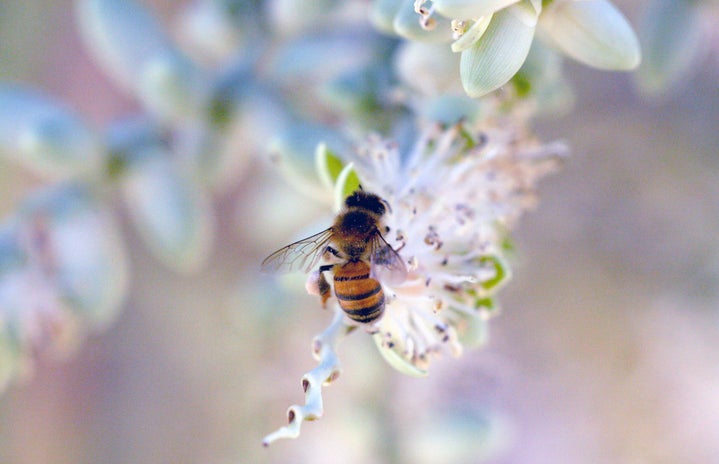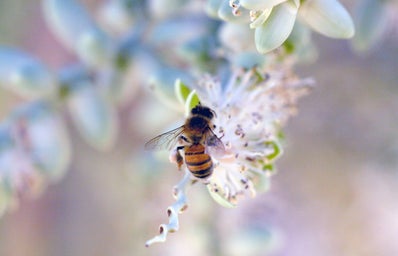Insects are generally regarded as disgusting, disruptive and even daunting in the western world. To many in this hemisphere, the idea of consuming insects as a food source, known as entomophagy, seems distasteful. However, an overwhelming majority of cultures practice entomophagy and reap its benefits.
It is estimated that approximately two billion people, around 25% of the world’s population, consume insects as part of their typical diet. So, why are insects such a popular food, and what can we learn from our foreign brethren about the advantages of chowing down on crickets, beetles and ants?
How are insects eaten around the world?
Insects make up a range of regional, national and international delicacies. As there are an estimated 30 million insect species in the world, even the pickiest eaters are spoiled for choice.
In Japan, China and other nations in Asia, cicadas are considered a staple. Cooking cicadas is comparable to cooking shrimp, and therefore can be consumed fried or boiled. In Vietnam, China and Korea, silkworms are a tasty traditional dish. Stir fry weaver ants are exceedingly popular in Thailand, while deep-fried tarantulas, although technically arachnids, are a big hit in Cambodia.
Westerners are still skeptical of adding insects to the menu despite their popularity. However, entomophagy may be practiced closer to home than expected.
Why you’ve probably eaten insects already.
Readers probably felt their hearts drop after reading the last headline, but you have more than likely unknowingly been practicing entomophagy for years.
Often, these nutrient-dense critters make their way into our packaged foods. One can of cream corn contains around two or more insect larvae or skins of larvae, likely larger than three millimeters long. Typically, these sneaky grubs, such as corn borers, live on the growing corn. Furthermore, 100 grams of frozen spinach is expected to contain around 50 aphids, thrips or mites.
Insect fragments are equally as common in processed foods. 100 grams of peanut butter is expected to contain around 30 or more insect fragments, while easy mac and cheese clocks in at over one insect fragment per gram.
Though unexpected, these critters may be a positive addition to our diets.
insect nutrition
Despite their microscopic size, insects pack a powerful punch in their nutritional profiles. Statistics have repeatedly proven insects to be a wonderful source of protein, healthy fats, vitamins and minerals.
Per 100 grams, these meats contain:
- Fly pupae – 63% protein, 16% fat
- Fried termites – 46% protein, 36% fat
- Locusts – 61% protein, 10% fat
- Beef – 17% protein, 7% fat
- Dried fish – 44% protein, 3% fat
Along with this array of arthropod options, cricket flour is increasing in popularity, even among Michelin Star chefs. With its mild and nutty flavor, more and more restaurants are adding cricket flour to their dishes to enhance the flavor and increase nutritional benefits.
Scientists consider crickets to be gram-for-gram one of the most efficient protein creators on the planet. As crickets contain all of the BCAAs (branched-chain amino acids) vital for human growth and development, they are considered a complete protein.
Cricket flour is also packed with vitamins and minerals. Around 100 grams provides 5.9 milligrams of iron, twice as much as the same amount of spinach. Furthermore, this small amount provides almost ten times more B12 than salmon.
How does this impact the environment?
It is not uncommon information that traditional livestock, such as cows, are heavily contributing to greenhouse gas emissions. These gases, such as ammonia and methane, are byproducts of these animals’ digestion and are largely responsible for climate change.
Furthermore, livestock brings about the issue of water shortages, as it takes between 1700 and 2500 gallons of water to produce one pound of dry protein from a cow. To produce the same amount of dry protein from crickets, only a gallon is required. By taking up fewer resources, crickets are an essential and sustainable form of protein amid a world concerned with the issue of overpopulation.
Where Can I eat insects?
With new research and more open attitudes surrounding entomophagy, 82% of Americans consider themselves willing to try insects as food. To those who have been willing to expand their palette, Chirps Cricket Protein Chips have become a hit. With two flavors to choose from and 20 grams of protein per bag, these chips have surged in popularity.
An increasing number of restaurants are beginning to add creepy crawlies to the menu. A few popular locations that have made the switch include:
- Bakan – Miami, FL
- Oyamel – Washington, D.C.
- The Black Ant – New York, NY
- El Catrin – Toronto, Ontario, Canada
- Grub Kitchen – St Davids, Pembrokeshire, Wales
From crispy crickets to tasty termites, the once-othered world of edible insects is finally making waves here in the West. In just a few years, maybe it will become the norm to buy pre-packaged tarantulas from the grocery store or to order a cricket steak at a high-end restaurant. Whatever the future of western entomophagy may bring, moving towards a more sustainable world of protein will aid us in our goals to save the planet.


